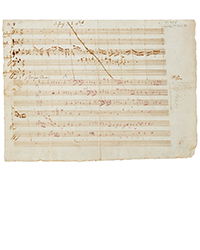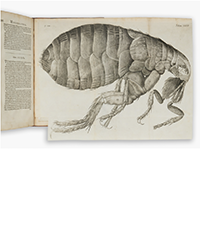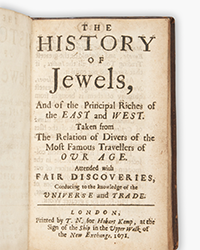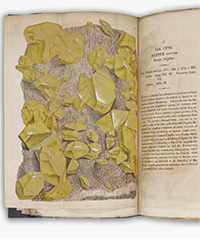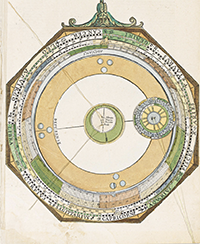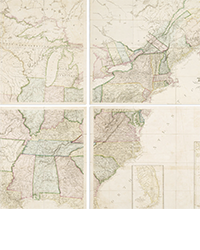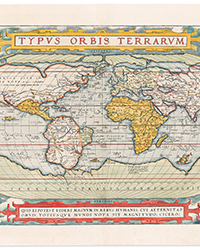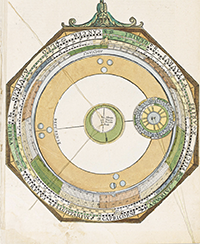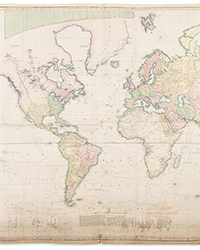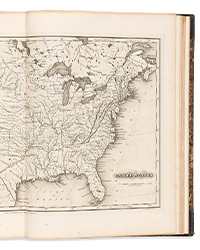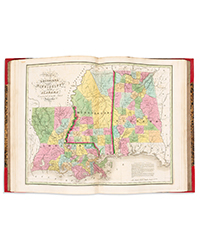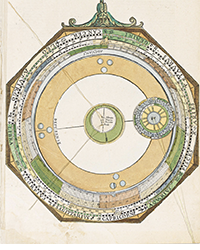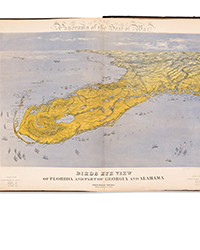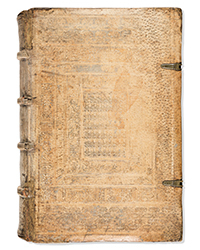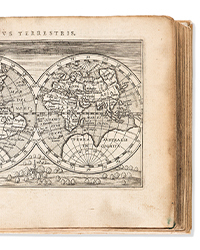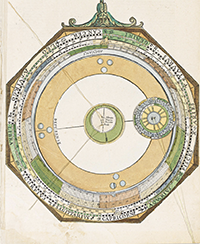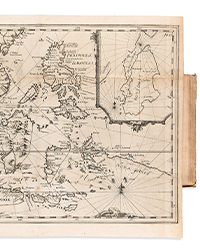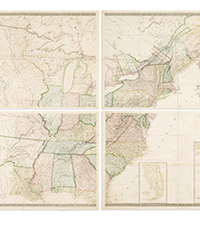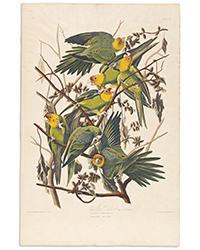I had the good fortune to grow up with parents who were antiquarian book dealers, so we lived in a house filled with books. My father was an avid collector of cartoon albums, especially from the first half of the 20th century. He shelved these in a long row on the bottom of the big bookcases in our dining room. While other kids look back at Babar or Curious George for their fond childhood memories, my early recollections are filled with Peter Arno, James Thurber, Harrison Cady, Gluyas William, Virgil (VIP) Parch and many more.
My dad never did anything halfway, so we had lots and lots of cartoon collections spanning things Americans found funny from Teddy Roosevelt to Harry Truman. Though we’ve seen a huge surge in interest and valuation of 20th century American comics, I’m doubtful that the same can be said of the cartoonists and the magazines that published them.
During that era, from the 1920s on, there were many outlets for this genre, but the New Yorker had by far the best stable of talent. In addition to the magazine, it published cartoon annuals starting in 1928 and continuing until the present day. Many of their best known and most popular cartoonists also published separate volumes of their own work. Some of these are still floating around on the web, still funny and usually not very expensive.
Since most of you probably did not spend your youthful Saturday mornings sitting cross legged under the dining room table paging through things to make you laugh, I thought I would share some of my favorites here in roughly chronological order.
Harrison Cady today is remembered by some as the illustrator who drew an endless variety of bugs in funny situations and by others as the artist for books written by Thornton Burgess. But I found him (and loved him) in heavy bound volumes of the “old” Life, the New York based humor magazine that had its heyday around 1909-1911. During that time Cady’s work often filled a full page or better yet the centerfold.
The good part about these drawings is they are intricately detailed and inked with a precision that really appealed to a kid’s imagination. Even better, as I got older I found they had plenty of political and satirical content, which with the passage of time often proved to be, if not politically incorrect, no longer mainstream. The bad part is they were drawn in a fine line that does not reproduce well on the Internet.
Check out the slideshow that goes with this article and you’ll see an enlarged detail from one of my favorites by Cady; it’s a 1909 Life centerfold showing President Teddy Roosevelt, known as a big game hunter, being mocked by the animals he so blithely slaughtered. In this drawing he’s mounted on a camel at the head of a long parade where many of the marchers look very much like him.
Also in the parade are marchers and floats labeled Jacob Riis, San Juan Hill, Order of Teddy Bears and many more. The whole group is watched by Black natives drawn non-PC (fat lips, grass skirts, strange hair styles), all laughing at him, as are all the giraffes, monkeys, elephants, and hippos.
Cady also had an eye for the things that ticked off old-school New Yorkers. One of the things that got their WASPy goat was that the immigrant Jewish population appeared to be getting rich by dominating many aspects of city life. Here's a link to his frankly provocative drawing characterizing New Yorkers as ‘Gulliver’ being pinned to the ground by hoards of big nosed Israelites intent on becoming wealthy in real estate, dry goods, millinery, jewelry and the theater. (To see a larger version click on the image and then on the magnifying glass)
Should you develop a taste for Cady there’s a recent compendium of his work titled Madness in Crowds, a bit on the pricey side. See the promo for it here
Carl Rose: There’s lots to say and know about Carl Rose, but perhaps the thing that sticks in my mind is his famous 1928 New Yorker illustration of a mother and daughter. Says mother: “It’s broccoli dear,” to which the child replies, “I say it’s spinach and to hell with it,” a line that almost 100 years later remains as part of the American idiom.
Gluyas Williams: I always loved his cartoons featuring groups of well intentioned but thoroughly confused people trying to overcome the obstacles of modern life. One of the most memorable is the 1928 cartoon from the New Yorker captioned, “The day the cake of Ivory sank at Procter & Gamble’s.” The Comics Journal has an excellent 2017 online illustrated article about Williams and his work.
Looking for something small, vintage and charming by this artist? Try People of Note, a little hardback illustrating symphony musicians issued in 1940.
Helen Hokinson, or Hoky as she was known to friends, was with the New Yorker from very early on. Beginning in 1931 she collaborated with John Reid Parker: he supplied the captions and she drew the pictures. She’s best known for gentle humor poking fun at the plump and amiable matrons of a certain age who populated the garden and bridge clubs of an earlier era.
According to the notes in the Yale collection Helen Hokinson’s cartoons were published in three collections during her lifetime, So You're Going to Buy a Book! (Minton, Balch & Co., 1931), My Best Girls (New York: E. P. Dutton, 1941), and When Were You Built? (New York: E. P. Dutton & Co., 1948), and three after her death: The Ladies, God Bless 'em (New York: E. P. Dutton & Co., 1950), There are Ladies Present (New York: E. P. Dutton & Co., 1952), and The Hokinson Festival (New York: E. P. Dutton & Co. 1956).
The Comics Journal profiled her in 2013 with quite a few examples of her work.
Otto Soglow: I have nothing but fond memories of the Little King who was drawn elegantly and with few words by Otto Soglow and often appeared in New Yorker albums. Again, the Comics Journal did a good job of highlighting his work in 2015.
James Thurber: Here’s another New Yorker stalwart who was a man of many talents, and while some of his prose may seem a little dated as we get farther into the 21st century, his drawings, primitive verging on outsider, are still as entertaining as ever.
There’s too much Thurber online to single out a single article or essay. But if you haven’t looked at his cartoons in a while, suggest you start with my favorite: “All right have it your way, you heard a seal bark,” progress to “Touché” and Google away from there.
Peter Arno: There couldn’t be a list of my childhood favorites without Peter Arno, even if I was too young to always get the gag. His “Back to the drawing board,” has popped into my mind often, especially following my own failures, large and small. And who can forget that other Arno classic: the group of obviously ardent Republicans rallying to the cry "Let's go to the Trans-Lux and hiss Roosevelt!"
While original artwork by any of these cartoonists bring decent prices Arno’s values seem particularly strong.
Robert Day: How many times did I thumb through my dad’s 1945 copy of All Out For the Sack Race? Many times, many many times. As a person who's been in more than a few sack races myself, the contrast between the boozy man slouched over the picnic table and the perky organizer of festivities has always seemed funny. Here’s a link to twenty of Day’s cartoons, some of which are not often seen.
Virgil Parch (VIP): I never really knew what to make of VIP, but I’ll always remember the cover of his album Water on the Brain. I especially liked his hapless soldiers with big heads and Picasso influenced line and perspective.
I thought he was weird and cool at the same time. Though it’s been literally decades since anything by him has passed through my hands, I’d still rank him a favorite and if not always funny, certainly original in a subversive kind of way. I couldn’t find anything truly definitive online but this link shows some of his cartoons that ran weekly in 1945.
Charles Addams: Here’s a cartoonist who was popular then and is still popular now. Macabre, dark, and funny simultaneously, he’s been readily embraced by each new generation. Addams easily made the transition page to the screen. My favorite cartoon shows the Addams family high on the rooftop of their Gothic mansion pouring boiling oil on the Christmas carollers below. When he died in 1988 at the age of 76 the New York Times ran his obit on page one.
Al Capp - The Shmoo: Unless you’re really hard core (and a little long in the tooth) you probably don’t remember the Shmoo (not Schmoo), those lovable bowling pin shaped vaguely phallic critters that were all the rage in the 40s and 50s.
They first appeared in Capp’s Li'l Abner strip 1948, but soon took on a larger existence. In my childhood there was no end to Shmoo merch, to wear, play with, collect and just generally accumulate. They were so popular that the US Treasury even issued a Shmoo savings bond in 1949. There are still plenty of Shmoo comics kicking around and if you can believe this Heritage Auction price guide they have increased in value.
After all, what's not to like about a gentle armless creature that multiplies faster than rabbits, lives on air and are not only delicious to eat but want to be eaten. According to the Shmoo Wiki, “They also produce eggs (neatly packaged), milk (bottled, grade-A), and butter—no churning required. Their pelts make perfect boot leather or house timbers, depending on how thick one slices them.” Trust me they’re due for a comeback.
The final entry on my list of favorites is Saul Steinberg: Some of the others may have faded, or perhaps I’m not quite as big a fan as I was as a kid, but for me Steinberg never gets old.
I have my own stash of Steinberg covers from the New Yorker, and artwork clipped from back issues. I’ve got my own well thumbed collections of his books in paper and hard back. I never ceased to be amazed at his creativity and prodigious output. He was versatile, prolific and endlessly inventive. Like so many other Steinberg fans, I’ve always favored his map of the United States as seen from the perspective of a New Yorker. In this well known picture our country more or less ends at 9th Ave.
If you’ve gotten this far (and it’s still early in December) that means you have time for a little last minute shopping. Do some worthy young person a favor and make their holiday gift a cartoon album, printed, on paper, in a book. Some things endure and humor is one of them.
—--------------
Reach RBH writer Susan Halas at wailukusue@gmail.com


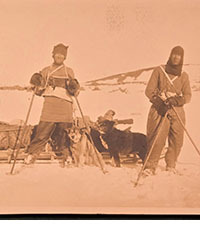
![<b>Scandinavian Art & Rare Books Auctions, Dec. 4:</b> ROALD AMUNDSEN: «Sydpolen» [ The South Pole] 1912. First edition in jackets and publisher's slip case. <b>Scandinavian Art & Rare Books Auctions, Dec. 4:</b> ROALD AMUNDSEN: «Sydpolen» [ The South Pole] 1912. First edition in jackets and publisher's slip case.](https://ae-files.s3.amazonaws.com/AdvertisementPhotos/0a99416d-9c0f-4fa3-afdd-7532ca8a2b2c.jpg)
![<b>Scandinavian Art & Rare Books Auctions, Dec. 4:</b> AMUNDSEN & NANSEN: «Fram over Polhavet» [Farthest North] 1897. AMUNDSEN's COPY! <b>Scandinavian Art & Rare Books Auctions, Dec. 4:</b> AMUNDSEN & NANSEN: «Fram over Polhavet» [Farthest North] 1897. AMUNDSEN's COPY!](https://ae-files.s3.amazonaws.com/AdvertisementPhotos/a077b4a5-0477-4c47-9847-0158cf045843.jpg)
![<b>Scandinavian Art & Rare Books Auctions, Dec. 4:</b> ERNEST SHACKLETON [ed.]: «Aurora Australis» 1908. First edition. The NORWAY COPY. <b>Scandinavian Art & Rare Books Auctions, Dec. 4:</b> ERNEST SHACKLETON [ed.]: «Aurora Australis» 1908. First edition. The NORWAY COPY.](https://ae-files.s3.amazonaws.com/AdvertisementPhotos/6363a735-e622-4d0a-852e-07cef58eccbe.jpg)
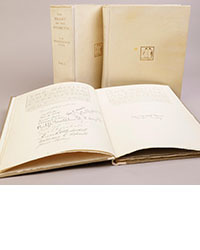
![<b>Scandinavian Art & Rare Books Auctions, Dec. 4:</b> SHACKLETON, BERNACCHI, CHERRY-GARRARD [ed.]: «The South Polar Times» I-III, 1902-1911. <b>Scandinavian Art & Rare Books Auctions, Dec. 4:</b> SHACKLETON, BERNACCHI, CHERRY-GARRARD [ed.]: «The South Polar Times» I-III, 1902-1911.](https://ae-files.s3.amazonaws.com/AdvertisementPhotos/3ee16d5b-a2ec-4c03-aeb6-aa3fcfec3a5e.jpg)
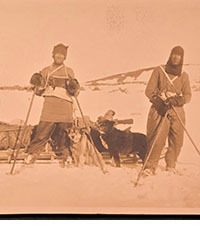
![<b>Scandinavian Art & Rare Books Auctions, Dec. 4:</b> [WILLEM BARENTSZ & HENRY HUDSON] - SAEGHMAN: «Verhael van de vier eerste schip-vaerden […]», 1663. <b>Scandinavian Art & Rare Books Auctions, Dec. 4:</b> [WILLEM BARENTSZ & HENRY HUDSON] - SAEGHMAN: «Verhael van de vier eerste schip-vaerden […]», 1663.](https://ae-files.s3.amazonaws.com/AdvertisementPhotos/d5f50485-7faa-423f-af0c-803b964dd2ba.jpg)
![<b>Scandinavian Art & Rare Books Auctions, Dec. 4:</b> TERRA NOVA EXPEDITION | LIEUTENANT HENRY ROBERTSON BOWERS: «At the South Pole.», Gelatin Silver Print. [10¾ x 15in. (27.2 x 38.1cm.) ]. <b>Scandinavian Art & Rare Books Auctions, Dec. 4:</b> TERRA NOVA EXPEDITION | LIEUTENANT HENRY ROBERTSON BOWERS: «At the South Pole.», Gelatin Silver Print. [10¾ x 15in. (27.2 x 38.1cm.) ].](https://ae-files.s3.amazonaws.com/AdvertisementPhotos/fb024365-7d7a-4510-9859-9d26b5c266cf.jpg)
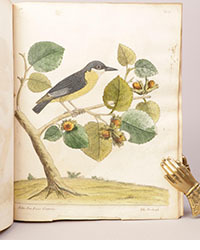
![<b>Scandinavian Art & Rare Books Auctions, Dec. 4:</b> PAUL GAIMARD: «Voyage de la Commision scientific du Nord, en Scandinavie, […]», c. 1842-46. ONLY HAND COLOURED COPY KNOWN WITH TWO ORIGINAL PAINTINGS BY BIARD. <b>Scandinavian Art & Rare Books Auctions, Dec. 4:</b> PAUL GAIMARD: «Voyage de la Commision scientific du Nord, en Scandinavie, […]», c. 1842-46. ONLY HAND COLOURED COPY KNOWN WITH TWO ORIGINAL PAINTINGS BY BIARD.](https://ae-files.s3.amazonaws.com/AdvertisementPhotos/a7c0eda0-9d8b-43ac-a504-58923308d5a4.jpg)
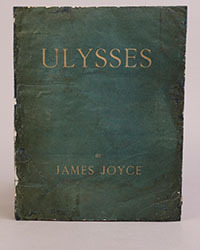
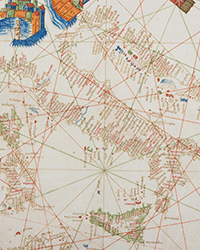
![<b>Sotheby’s, Dec. 11:</b> Darwin and Wallace. On the Tendency of Species to form Varieties..., [in:] <i>Journal of the Proceedings of the Linnean Society,</i> Vol. III, No. 9., 1858, Darwin announces the theory of natural selection. £100,000 to £150,000. <b>Sotheby’s, Dec. 11:</b> Darwin and Wallace. On the Tendency of Species to form Varieties..., [in:] <i>Journal of the Proceedings of the Linnean Society,</i> Vol. III, No. 9., 1858, Darwin announces the theory of natural selection. £100,000 to £150,000.](https://ae-files.s3.amazonaws.com/AdvertisementPhotos/00d5fd41-2542-4a80-b119-4886d4b9925f.png)

